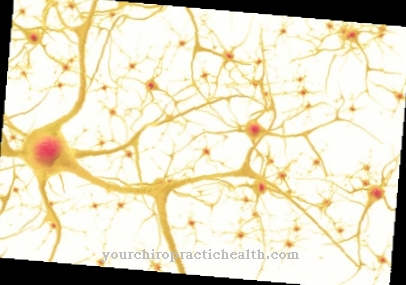The Pale makes the face and extremities lose color by reducing the blood flow to these parts of the body. This phenomenon occurs above all in the context of a shock-induced circulatory centralization. Sudden pallor ensures survival by drawing blood from the extremities to the vital organs.
What is the pale?

A patient who turns pale loses color in the face and extremities. This loss of color is usually due to a decrease in blood volume, which can have various causes.
Pallor is often an illness, for example in the case of leukemia, coronal myocardial infarction and kidney failure. Even a cold can be accompanied by pallor. The same goes for blood loss. Pale is not an independent disease, but it is a symptom.
Sudden paleness is always a bleeding phenomenon. The body withdraws the blood from the extremities to deliver it to the vital organs. The opposite of this phenomenon is blushing. Especially in the facial region, the blood volume increases when flushing. The cause of this phenomenon is a sudden expansion of the blood vessels in the affected skin area.
Function & task
The organism wants to ensure survival by going pale. In this context, pallor is usually associated with a centralization of the circulatory system. Such centralization is a vital process of adjusting the blood supply. Blood is drawn from the periphery of the body to the vital centers. Above all, the centralization ensures that the heart and brain are adequately supplied with blood.
The red blood cells in the blood carry oxygen. If this oxygen does not reach the organs in sufficient quantity, organic damage occurs. To prevent such damage, the organism releases catecholamines. Catecholamines are biogenic amines such as the neurotransmitter dopamine or the substances adrenaline and noradrenaline. These catecholamines are mainly released in the adrenal glands and the central nervous system. In addition to paleness, the discharge usually results in an accelerated heartbeat. Sweats are also common.
The centralization via catecholamines can mainly be observed in the context of a physiological shock. The body tries to counteract a lack of blood volume. This deficiency occurs, for example, in the context of bleeding, fluid loss or sepsis.
However, psychological and neurological shocks can also initiate centralization. In neurogenic shocks, for example, the transmission of stimuli in the circulatory and capillary systems is disturbed. In this context, the shock and the pallor associated with it is an acute stress reaction. The automatically released catecholamines cause the peripheral blood vessels to contract. The blood volume is thus withdrawn into the large vessels of the center, which is particularly important in the event of bleeding.
In addition to the causes mentioned, a centralization of the circulation and the associated paleness can also be related to hypotension. With this phenomenon, the blood pressure is below 100/60 mmHg. Hypotension often occurs in the context of heart disease. But they can also be associated with infections or glandular dysfunction.
Another cause of centralization of the circulatory system is anemia. This lack of blood can occur as a result of bleeding.In some cases, however, tumors, infections or immune and enzyme defects are also responsible for anemia. In the case of centralized circulation, the paleness mostly affects the mucous membranes as well as the outer skin.
Under certain circumstances, pale color can also occur in the context of smoking and in this context is due to life-sustaining effects similar to those described here. Some shocks and centralizations are such a response to certain poisons. In this context, there is talk of anaphylactic shock, in which histamine is released. As a result of this release, the vessels expand, blood pressure drops and there is a lack of blood. In this case, too, centralized circulation is required to ensure survival.
Illnesses & ailments
Since paleness is just a symptom and not a specific disease, diagnosis in this case is difficult. Pale color is unspecific, because centralization of the cycle can have various causes.
Some of these causes have been mentioned above, but that doesn't stop the list. Various syndromes, injuries, organ diseases and infectious diseases are accompanied by paling. The anamnesis is therefore an important starting point for the doctor to determine the cause of pathological pale.
In this context, it is relevant, for example, when exactly the paleness occurs. The patient's pulse and blood pressure are just as relevant. For example, a blood test can reveal anemia. Anemia can also have various causes. The diagnosis is therefore often not completed with the blood test.
Depending on the suspicion, the laboratory diagnostics may be followed by ECG examinations or ultrasound examinations of the spinal cord. In this way, suspected coronal heart disease and leukemia can be investigated. In order to treat pallor, the doctor starts with the underlying disease.













.jpg)

.jpg)
.jpg)











.jpg)